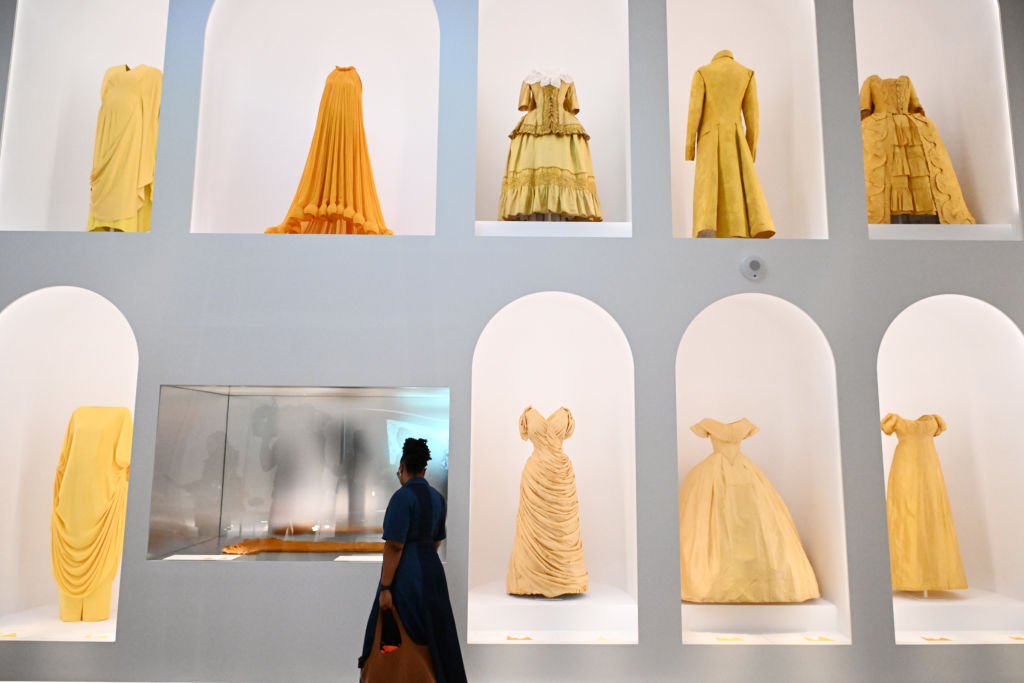

On Monday, the Metropolitan Museum of Art will host its annual Met Gala, a world-renowned fundraiser that brings together luminaries from the aesthetic, athletic, music, business, and political worlds to support the museum’s Costume Institute, an establishment with a collection of nearly 33,000 sartorial pieces that span seven centuries.
The originated in 1948 as a midnight supper called the Costume Institute Benefit and has grown over time into a major cultural event that uses clothing as an intellectual marker of historical epochs, social and political movements, and evolving perspectives on good taste and beauty.
Each year, guests of the Met Gala are required to dress according to a that corresponds with the spring exhibition. This year the theme “The Garden of Time” aligns with the Costume Institute’s exhibit called Both the museum exhibit and the gala theme fuse elements of fashion and nature to represent the transitions of life and the changing nature of fashion. This focus on the seasonal and temporal invites reflection on the importance of appreciating life’s moments of happiness, progress, virility, and achievement.
But while the headlines will focus on how celebrities choose formal wear that embodies this theme, fashion is not the only art form that engages with the aesthetic representation of time. In fact, works of art have long served as prominent markers of the passage of time, as they have captured social and political transitions in ways that allow us to read the history they contain, if we know what to look for. For centuries, art has commemorated time by implicitly and explicitly addressing the major cultural, political, and social changes in a nation’s history.
American political portraits were ideological derivatives of the portraits Europeans commissioned of their rulers. Monarchs used these paintings to tout their legitimacy and that of the political system that imbued them with power. In 1761, for example, Allan Ramsay painted a portrait of England’s King George III upon his coronation. The portrait aimed to serve as a visual representation of the new king’s national leadership and political legitimacy.
Early Americans quickly adopted this practice to lend credibility to their new political project. In 1776, Charles W. Peale painted a portrait of George Washington to celebrate his commission as Commander of the Continental Forces during the American Revolution. Importantly, the image provided Americans with a new image of national authority and legitimacy — one that replaced the portrait of King George. Washington’s portrait, therefore, served as an aesthetic mark of a political transition, a moment in time when Americans were replacing monarchial leadership with representative government.
Because such portraits had political purposes, and women and people of color were excluded from politics in the 18th and early 19th centuries, in instances when women, children, servants, and enslaved people were included in political portraits, they were positioned strategically as entities under someone else’s power and influence.
In 1789, for example, Edward Savage painted a portrait of the Washington family. It depicts various members of now-President Washington’s immediate family engaged with one another around a table. The painting also included an enslaved attendant who was separated from all the other individuals. Each person’s significance in the portrait was tied to their relationship with George Washington, the only figure in the painting with political rights.
These reasons, among others, contributed to 19th-century abolitionist Frederick Douglass’ preference for the new art of photographic portraits instead of painted ones. Photography was invented in 1839, one year after Douglass emancipated himself from slavery. Douglass asserted that photographs gave African Americans the opportunity to control their self-representation. By commissioning photographs, free Black people could present themselves as portrait subjects in the way they chose. Douglass regularly commissioned photos of himself at each stage of his life, and he became the most photographed American in the 19th century. He always wore understated yet elegant clothing as a means of demonstrating his personal dignity and challenging stereotypes that asserted African Americans were inherently inferior to their white counterparts.
Portraits weren’t the only type of painting with political meaning in the 19th century. Landscapes also conveyed political ideas. In 1836, Thomas Cole painted a series called The Course of Empire. The paintings alluded to the political and moral requirements of a healthy nation, and how the U.S. was failing to meet these standards. Cole aimed for the paintings to serve as a sign of caution to his fellow Americans about the nation’s policies and values, as it continued expanding west on the North American continent, increased the exporting of goods, and continued laboring to contain the debates over the expansion of slavery.
Cole called one of the paintings in the series The Pastoral State, which depicted an idealized representation of a civilization. For the painter, an ideal nation seemed to be an agricultural state in which neither the government nor the citizenry would alter the natural landscape excessively. Citizens would work the land or engage in trade to meet their needs instead of creating massive farms, plantations, or industrial plants designed to generate immense profit.
In the Course of Empire series, Cole demonstrated what he saw as the causes of political decay, and he ended the series with a painting called Desolation, which depicted the effects of that decay upon a nation. It was a stark warning to correct course before it was too late.
Both landscapes and portraits in this era depicted the values and politics of early America, whether as subtle reflections or in more explicitly political work like Cole’s paintings. As the centuries have passed, American art has continued to reflect the social and political dynamics of the time.
As the U.S. has worked to address bigotry and injustice throughout the second half of the 20th century and first decades of the 21st century, art reflected these changes. For example, in 2018, the National Portrait gallery . Painted by artist Kehinde Wiley, the painting was a symbol of political and aesthetic progress. Wiley depicted the first Black president outdoors, which traditionally signified a leader’s commitment to those he governed, a testament to his fitness for leadership. It was a stark cry from early American portraits in which Black figures were usually depicted as subservient or in the background — a sign of how far the U.S. had come over two centuries.
Not only has portraiture become more racially inclusive, it has also become more democratic. Portraits of national leaders are not only in museums or government buildings. Sometimes, they can be found in window displays on busy streets of major cities.
For example, Neiman Marcus recently honored the late Congresswoman Eddie Bernice Johnson, who served Dallas in Congress for 30 years until her retirement in 2023. After Johnson passed away on Dec. 31, the flagship Neiman’s store in downtown Dallas created a three-dimensional portrait representation of Johnson to give her constituents the opportunity to memorialize her in an up-close, personal manner. Additionally, the staff kept fresh white roses near the mannequin as a representation of the congresswoman’s principled character and timeless values.
The window display of Johnson is another example of how imagery has often captured seminal moments of American history. It also serves as a necessary conduit to Neiman Marcus’ effort to democratize the Met Gala, which has traditionally been a spectacle for the wealthy and powerful. The retailer is filling the windows of its downtown Dallas store with floral themed displays i


